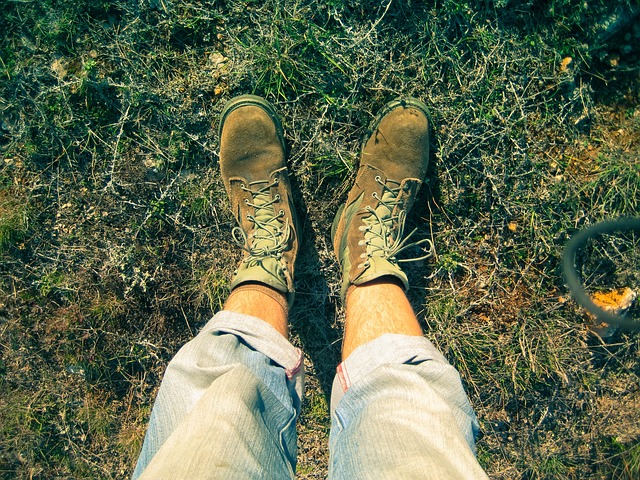When it comes to hiking, having the right gear is crucial. One of the most important pieces of gear for any hiker is their hiking boots. Hiking boots provide support, protection, and stability, making them essential for any outdoor adventure. However, if your hiking boots don’t fit properly, they can cause discomfort and even lead to injuries. This is why one of the common questions among hikers is how snug should hiking boos be?
Hiking boots should be snug but not too tight, allowing enough room to wiggle your toes while preventing your heel from slipping. The fit should be secure around your ankle and midfoot while allowing some flexibility in the toe box. It is essential to find the right fit for your feet by measuring accurately, considering foot shape and size, and trying on boots with the socks you plan to wear while hiking. Properly fitting hiking boots provide the necessary support and protection for a comfortable and safe hiking experience.
In this article, I will discuss how snug hiking boots should be and the factors that affect fit. I will also provide tips for measuring your feet, choosing the right size, ensuring proper fit, and breaking in your hiking boots. By the end of this article, you will have the knowledge and confidence to find the perfect fit for your hiking boots, ensuring a comfortable and safe outdoor experience.
Factors Affecting Fit
Several factors can affect the fit of your hiking boots. Understanding these factors can help you find the right boots that will provide optimal support and comfort for your feet. The following are some of the main factors that can affect the fit of hiking boots:
- Foot shape and size: The shape and size of your foot play a significant role in determining the right fit for your hiking boots. It is crucial to measure your feet accurately and consider your foot’s width, arch, and volume when selecting boots.
- Sock choice: The socks you wear with your hiking boots can affect the fit. Thick socks, for example, may make the boots feel tighter, while thin socks may cause your feet to slide around inside the boots.
- Lacing technique: Proper lacing techniques can improve the fit of hiking boots. Different lacing techniques can adjust the fit of the boot in specific areas such as the heel or toe box.
- Insole selection: Insoles can provide additional support, cushioning, and comfort. Using custom insoles or choosing insoles based on your foot’s needs can help improve the fit of your hiking boots.
How to Measure Your Foot
Measuring your foot accurately is essential to find the right size of hiking boots that fit well. Here are 8 steps to measure your foot accurately:
- Get a piece of paper, a pen, and a ruler or measuring tape.
- Place the paper on a hard, flat surface, such as a tiled or hardwood floor.
- Sit down in a chair and place one foot on the paper, with your heel touching the wall.
- Trace the outline of your foot with the pen, making sure to keep the pen vertical and close to your foot.
- Use the ruler or measuring tape to measure the length of your foot from the back of the heel to the tip of the longest toe. Repeat the process for your other foot.
- To measure the width of your foot, place the ruler or measuring tape at the widest part of your foot, usually at the ball of your foot, and measure from one side to the other.
- Make note of both the length and width measurements for both feet.
- Use the measurements to determine your shoe size, using a size chart provided by the manufacturer.
It is essential to measure both feet as they may be slightly different sizes. Also, measure your feet at the end of the day when they are likely to be at their largest due to swelling.
Choosing the Right Size
Choosing the right size of hiking boots is essential for a comfortable and safe outdoor experience. Here are some tips for selecting the right size:
- Use your measurements: Use the length and width measurements of your feet to find your size on the manufacturer’s size chart. Some brands may have different sizing, so be sure to check their specific chart.
- Consider your foot volume: Foot volume refers to the amount of space your foot takes up in the boot. If you have a high foot volume, you may need a larger size to accommodate the extra space.
- Try on boots in-store: It is recommended to try on hiking boots in-store to ensure a proper fit. Wear the socks you plan to use for hiking and walk around in the boots to test the fit.
- Leave room for toes: When trying on hiking boots, leave some room at the front of the boot for your toes. This will prevent them from hitting the front of the boot on downhill slopes, which can cause discomfort or even toenail injuries.
- Check the fit: Make sure the boot fits snugly around your heel and ankle and does not slip when walking. The boot should also have enough room in the toe box to wiggle your toes comfortably.
- Consider breaking in time: Keep in mind that hiking boots may take some time to break in, so a slightly snugger fit initially may be necessary.
Ensuring Proper Fit
Ensuring the proper fit of your hiking boots is crucial for comfort and safety while hiking. Here are 6 tips for ensuring a proper fit:
- Lacing techniques: Proper lacing techniques can improve the fit of hiking boots. Experiment with different lacing techniques to find the one that provides the best fit for your foot.
- Check for slippage: The heel of your foot should not slip inside the boot. If there is any slippage, try tightening the laces or adjusting the insole.
- Test on inclines: Try walking up and down inclines to ensure that the boot provides the necessary support and fit for different terrains.
- Consider socks: Wear the socks you plan to use for hiking when trying on boots to ensure a proper fit. Thick socks can make boots feel tighter, while thin socks can cause your feet to slide inside the boots.
- Test with weight: When trying on hiking boots, wear a backpack with a weight similar to what you plan to carry on your hikes. This will give you a better idea of how the boots will feel during a hike.
- Check for pressure points: If you feel any pressure points or discomfort, adjust the laces or try different insoles to improve the fit.
Common Fit Problems and Solutions
There are several common fit problems that hikers may experience with their hiking boots. Here are five solutions to these issues:
- Tightness in the toe box: Tightness in the toe box can cause discomfort or even lead to blisters. To alleviate this, try loosening the laces around the toe box or adjusting the insole to provide more cushioning. (Here’s how much toe room do you need in hiking boots.)
- Slipping heel: A slipping heel can cause discomfort and blisters. To fix this, try tightening the laces around the ankle and heel area or using a heel-lock lacing technique.
- Pressure points: Pressure points can cause discomfort and pain while hiking. Try adjusting the lacing or using a custom insole to alleviate the pressure.
- Blisters: Blisters are a common issue for hikers. To prevent blisters, ensure your boots fit snugly and comfortably, and consider using moleskin or blister pads in problem areas.
- Arch support: Lack of arch support can cause discomfort and fatigue. Consider using custom insoles with arch support or selecting boots with built-in arch support.
Remember to take the time to find the right fit and make adjustments as needed to ensure optimal comfort and support for your feet.
Breaking in Hiking Boots
Breaking in hiking boots is essential to prevent discomfort and injuries while hiking. Here are some tips for breaking in your hiking boots:
- Wear them around the house: Start by wearing your new hiking boots around the house for short periods to get your feet accustomed to them.
- Gradually increase wear time: Gradually increase the time you wear your hiking boots over several days or weeks.
- Wear them on short hikes: Once you have worn your hiking boots for a few hours, try wearing them on short hikes to help break them in.
- Adjust the lacing: Adjust the lacing to improve the fit and reduce discomfort. Experiment with different lacing techniques to find what works best for your feet.
- Use blister prevention: Use blister prevention products, such as moleskin or blister pads, in areas where you are prone to blisters.
- Stretch the boots: If the boots feel too tight in certain areas, try stretching them by wearing thick socks or using a boot stretcher. (Click here to check how tight hiking boots should be.)
- Be patient: Breaking in hiking boots takes time, and it is essential to be patient and not rush the process.
Maintenance and Care
Proper maintenance and care of your hiking boots can help prolong their lifespan and ensure optimal performance. Here are some tips for maintaining and caring for your hiking boots:
- Clean them regularly: Dirt, mud, and other debris can cause wear and tear on your boots. Regularly clean them with a soft brush, warm water, and mild soap.
- Dry them properly: After cleaning or hiking in wet conditions, ensure that your boots are dried properly to prevent damage and mold. Remove the insoles and laces and let the boots air dry in a well-ventilated area.
- Apply waterproofing: If your boots are not already waterproof, apply a waterproofing treatment to help protect them from moisture.
- Replace worn-out parts: Replace worn-out parts, such as laces or insoles, to ensure optimal performance and fit.
- Store them properly: Store your boots in a cool, dry place away from direct sunlight or heat sources. Stuff them with newspaper to help them maintain their shape.
- Rotate your boots: Rotating your boots with another pair can help prolong their lifespan and prevent wear and tear from constant use.
Conclusion
In conclusion, learning how snug should hiking boots be is crucial for a comfortable and safe outdoor experience. Factors that affect fit include foot shape and size, sock choice, lacing technique, and insole selection. To find the right fit, measure your feet accurately, choose the right size, and ensure proper fit by adjusting the lacing and testing on different terrains and inclines.
Common fit problems, such as tightness in the toe box or slipping heels, can be addressed by adjusting the lacing or using custom insoles. It is essential to break in hiking boots gradually and be patient with the process. Proper maintenance and care of your hiking boots can help prolong their lifespan and ensure optimal performance. By following these tips and taking the time to find the right fit for your feet and your hiking needs, you can enjoy a comfortable and safe hiking experience.










